- Date
Top 10 Site Analytics Tool Picks to Boost Your Website in 2025
 Andrii Romasiun
Andrii Romasiun
In 2025’s digital landscape, having the right site analytics tool can be the difference between staying ahead and falling behind. As competition intensifies online, advanced analytics are no longer optional for businesses aiming to optimize performance and user experience.
This article will guide you through the top 10 site analytics tool solutions that can transform your website’s impact. You’ll discover tools ranging from privacy-first to AI-powered, each with unique features, pricing, and ideal use cases.
Expect actionable insights, detailed comparisons, and clear next steps to help you select the best analytics for your goals.
Why Site Analytics Matter in 2025
In 2025, understanding how visitors interact with your website is more crucial than ever. A modern site analytics tool is no longer just a backend accessory, but a strategic necessity for digital growth. These tools empower businesses to monitor performance, enhance user experiences, and make data-driven decisions that directly impact the bottom line.
The Evolving Role of Website Analytics
Website analytics have transitioned from simple traffic counters to advanced, multidimensional platforms. Today’s site analytics tool delivers real-time data, capturing user journeys, engagement, and conversion events as they happen. This shift enables agile decision-making, which is essential in a rapidly changing digital market.
Modern businesses rely on a site analytics tool for SEO, UX, and conversion optimization. For example, those adopting advanced analytics have reported up to a 20% increase in conversion rates, underscoring the value of actionable insights. If you are new to the topic, What is web analytics? offers a comprehensive introduction to these concepts and their importance.
Analytics are now at the heart of marketing, product development, and customer engagement strategies. With a robust site analytics tool, organizations can proactively identify opportunities and address issues before they escalate.
Privacy, Compliance, and User Trust
The regulatory landscape is tightening, with GDPR, CCPA, and other privacy laws shaping how data is collected and processed. Selecting a compliant site analytics tool is no longer optional, but a critical business requirement.
Privacy-first solutions are rising in popularity, offering cookieless and anonymous tracking that respects user data. Many organizations find that adopting a privacy-focused site analytics tool leads to increased user trust and lower bounce rates. This shift not only meets legal obligations, but also enhances brand reputation.
Choosing a tool that prioritizes privacy and compliance demonstrates a commitment to ethical data use. In 2025, these factors are just as important as functionality or cost when evaluating analytics solutions.
Competitive Benchmarking and Growth
A site analytics tool is invaluable for benchmarking your performance against industry competitors. Whether you want to identify content gaps, optimize ad spend, or uncover new growth opportunities, analytics provide the data you need.
Many organizations use a site analytics tool to track key metrics and compare them with industry standards. This enables smarter allocation of resources and more effective campaign strategies. There are numerous case studies where analytics insights have led to substantial improvements in ROI and business outcomes.
Ultimately, investing in the right site analytics tool equips your team with the knowledge to outperform competitors and drive sustainable growth.
Key Features to Look for in Modern Site Analytics Tools
Choosing the right site analytics tool is essential for unlocking actionable insights and driving business growth. Modern solutions go far beyond counting visits or page views. To make an informed decision, focus on the features that truly empower your team to excel in a competitive landscape.
Core Capabilities and Metrics
A modern site analytics tool should offer more than basic user tracking. Look for real-time dashboards, detailed traffic sources, and comprehensive user journey mapping. Conversion funnels and event tracking are pivotal for understanding where users drop off or engage.
Key features to prioritize:
- Customizable reports and segmentation
- Granular event tracking for behavioral analysis
- Historical and real-time data access
For a deeper dive into how advanced event tracking works, see this Event tracking guide for websites. The right site analytics tool will transform raw data into meaningful actions.
Integrations and Ecosystem Compatibility
A site analytics tool should seamlessly fit into your existing digital ecosystem. Integration with marketing platforms, CRM systems, and e-commerce solutions is crucial for a streamlined workflow.
Consider these integration points:
- APIs for custom automation
- Direct connections to Google Ads, Facebook Ads, and email platforms
- Compatibility with business intelligence tools
Unified analytics across channels enable more accurate attribution and reporting. Ensure your site analytics tool can scale with your marketing stack as your organization grows.
Privacy, Security, and Data Ownership
With increasing privacy regulations, a site analytics tool must prioritize compliance and user trust. Cookieless tracking, GDPR readiness, and transparent data residency options are now standard expectations.
Evaluate these privacy features:
- Anonymous data collection methods
- Full data ownership, especially for sensitive industries
- Choice between cloud and self-hosted deployment
Open-source site analytics tool options allow organizations to maintain control over their data, which is vital for regulated sectors. Prioritizing security and compliance will protect both your business and your users.
Usability and Support
A sophisticated site analytics tool should not come at the cost of usability. Intuitive dashboards, quick setup, and a gentle learning curve are essential for fast onboarding.
Look for:
- Responsive customer support and documentation
- Active user communities for peer assistance
- Guided onboarding and troubleshooting resources
User-friendly interfaces and strong support accelerate adoption, helping your team extract value from your site analytics tool without unnecessary friction.
Top 10 Site Analytics Tool Picks for 2025
Choosing the right site analytics tool is pivotal for businesses aiming to thrive in 2025’s digital landscape. Each platform listed below offers unique strengths, tailored for different goals, privacy needs, and technical requirements. Let’s dive into the top 10 picks, compare their capabilities, and help you discover the best fit for your organization.
Swetrix
Swetrix is a privacy-focused site analytics tool that offers both cloud and self-hosted options. Pricing starts at $19/month for 100,000 events, while the Community Edition is free for self-hosting.

Key features include:
- 100% cookieless tracking and GDPR compliance
- Real-time and historical analytics
- Error monitoring and customizable alerts
- Open-source codebase and API access
- Team collaboration tools
Swetrix is ideal for startups, agencies, developers, and privacy-conscious organizations that value transparency and full data ownership. The intuitive dashboard and quick setup process make it accessible for all skill levels.
Pros: Ethical analytics, privacy by design, flexible deployment
Cons: No free cloud plan after trial, advanced features require higher tiers
If you’re considering a privacy-first site analytics tool, Swetrix stands out as a strong alternative to more traditional platforms.
Mouseflow
Mouseflow specializes in visualizing user behavior through session recordings and heatmaps. Its free plan provides basic tracking, while paid plans start at $39/month.
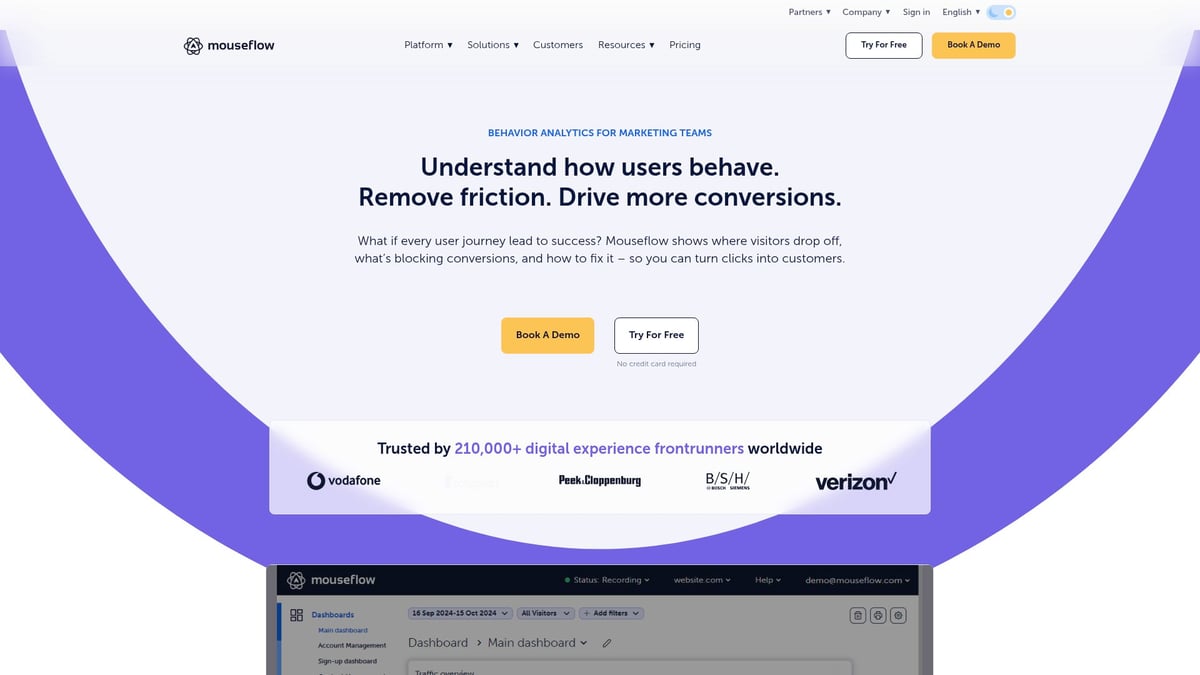
Key features:
- Session replays and detailed heatmaps
- Funnel and form analytics
- Integrations with major platforms
Mouseflow excels at revealing conversion bottlenecks and UX pain points. Marketers, UX designers, and CRO professionals use this site analytics tool to optimize site flows and increase engagement.
Pros: In-depth behavioral insights, clear visualizations
Cons: Free plan is limited, can be resource-heavy for large sites
Supermetrics
Supermetrics is a powerful data aggregation site analytics tool that pulls data from over 150 sources. Pricing begins at $29/month (annual billing).
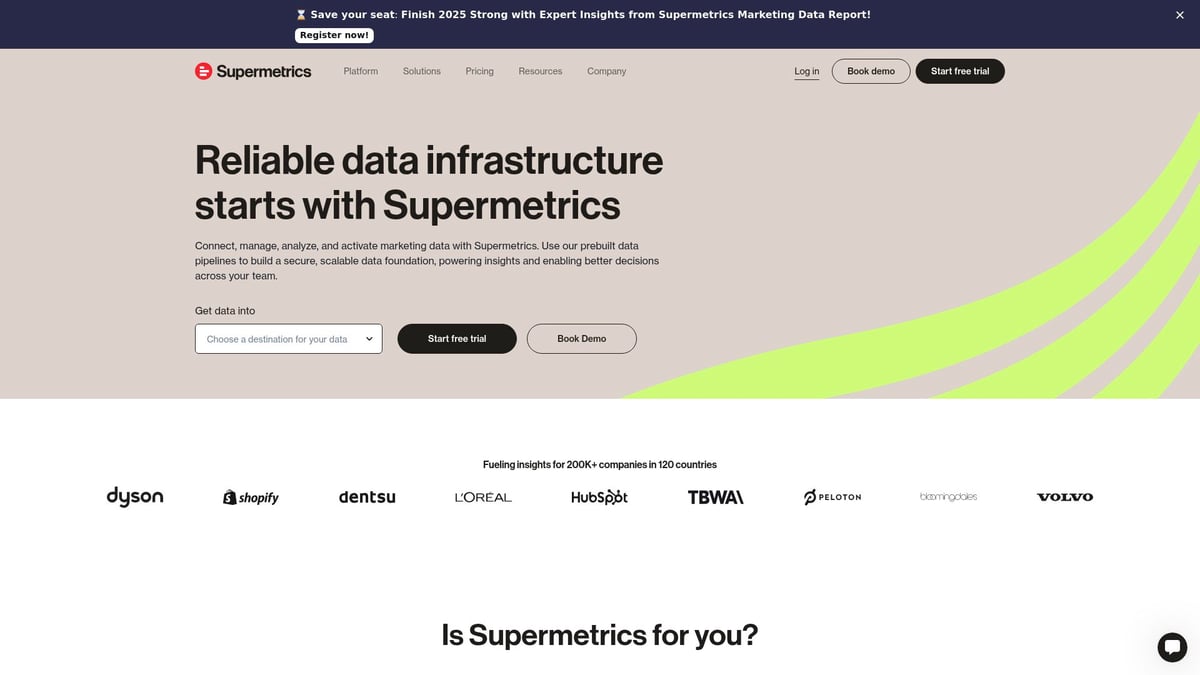
Key features:
- Automated reporting and advanced data transformation
- Scheduling and customizable data flows
- Seamless integration with BI tools
Supermetrics is tailored for marketing teams and data analysts managing multi-channel campaigns. It simplifies complex reporting and allows deep analysis across platforms.
Pros: Extensive integrations, automation saves time
Cons: Steep learning curve for beginners, costs increase with usage
Hotjar
Hotjar combines qualitative and quantitative insights in a single site analytics tool. Free and paid plans (from $39/month) are available.
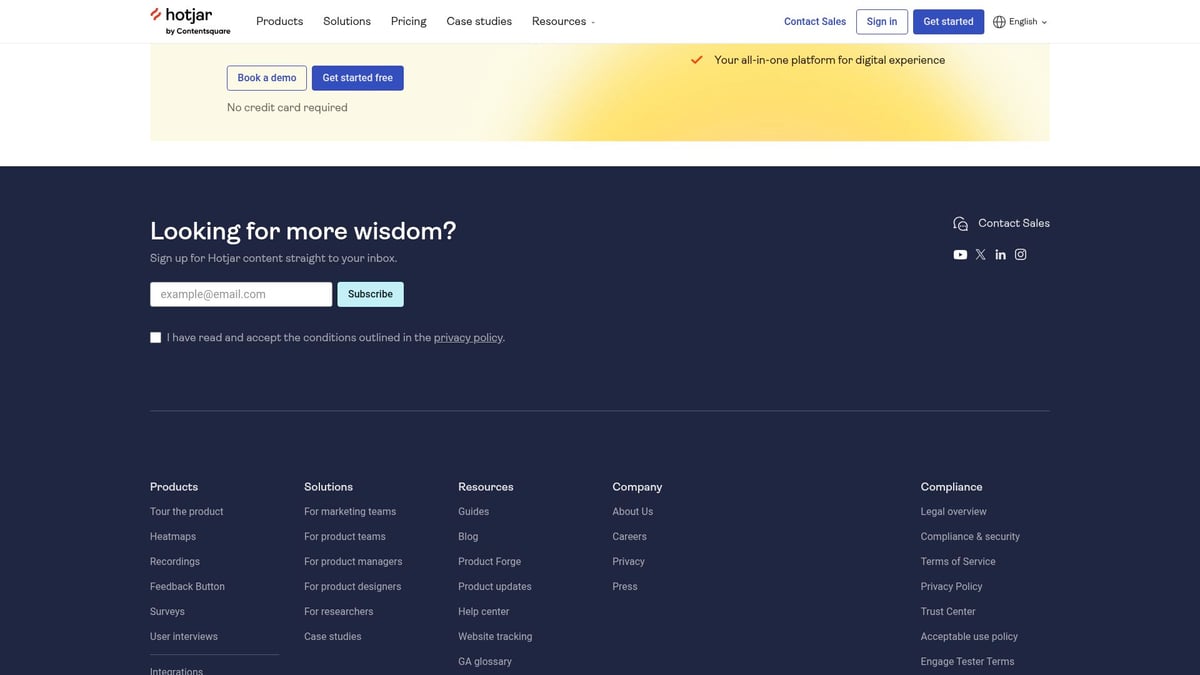
Key features:
- Heatmaps and session recordings
- Surveys, polls, and user interviews
Hotjar helps product managers and UX teams understand real user interactions and gather feedback. It’s quick to set up and integrates easily with most websites.
Pros: User-friendly, direct user feedback collection
Cons: Limited advanced analytics, potential performance impact if not optimized
Google Analytics
Google Analytics remains the industry standard site analytics tool, with a robust free version and GA 360 for enterprises (starting at $50,000/year).
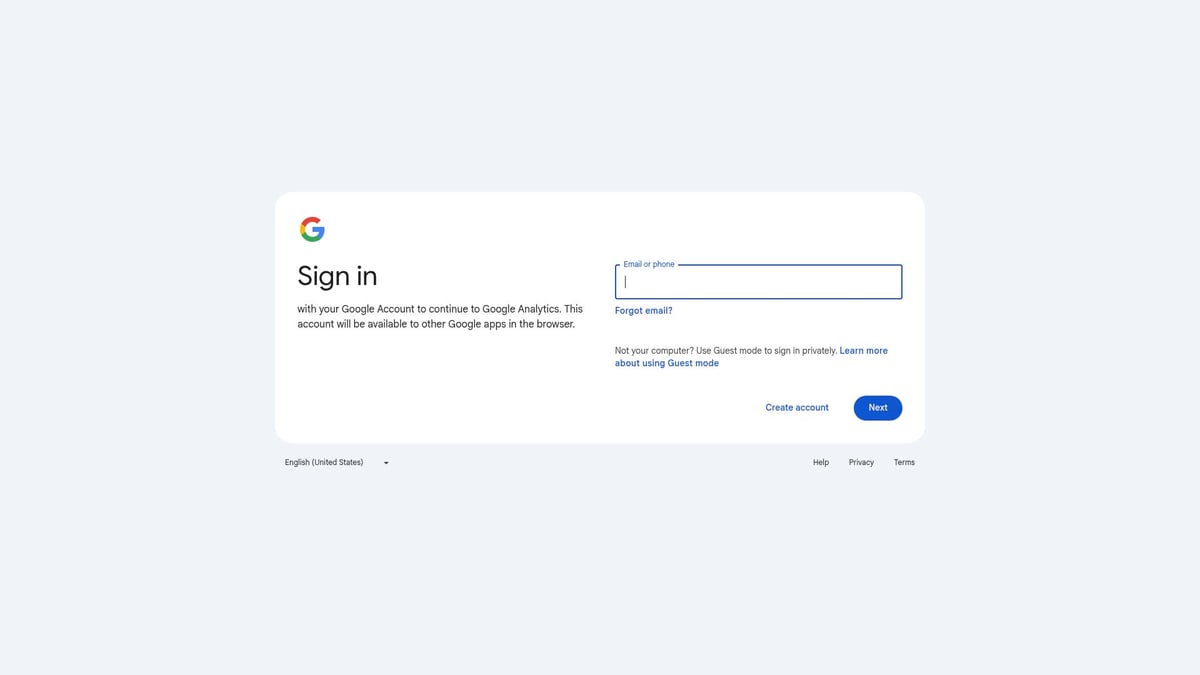
Key features:
- Real-time analytics and audience segmentation
- Conversion and e-commerce tracking
- Attribution modeling
Google Analytics suits businesses of all sizes, offering powerful features and seamless integration with the Google ecosystem. However, it has a complex interface and privacy compliance requires customization.
Pros: Comprehensive data, free for most users
Cons: Steep learning curve, privacy and GDPR challenges
Fullstory
Fullstory is a premium site analytics tool focused on session replay and advanced behavioral analysis. Pricing is custom, with a free trial available.
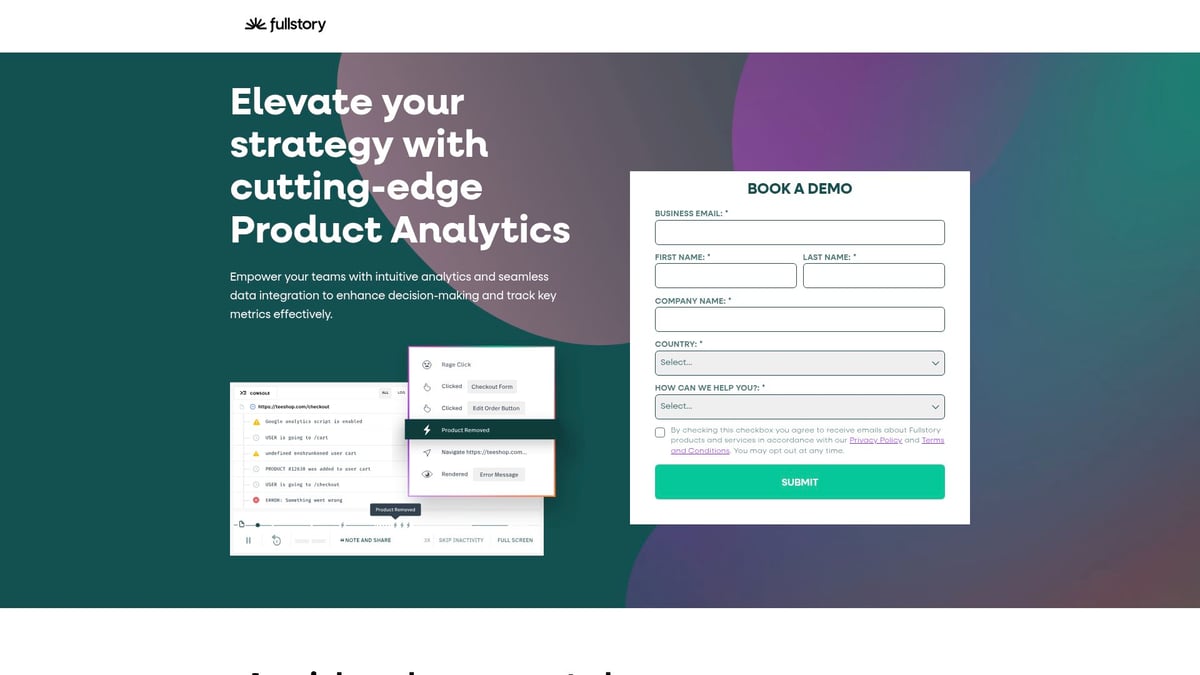
Key features:
- Session replays and heatmaps
- Conversion funnels and segmentation
- Error tracking
Product teams and SaaS companies rely on Fullstory for deep insights into user journeys and friction points. Its error detection capabilities are particularly valuable for optimizing user experience.
Pros: Actionable insights, strong error detection
Cons: Higher price point, technical setup may be needed
Aicarma
Aicarma is an AI-driven site analytics tool that tracks brand visibility and reputation in AI-generated content. Paid plans start at $29/month, with a free trial available.
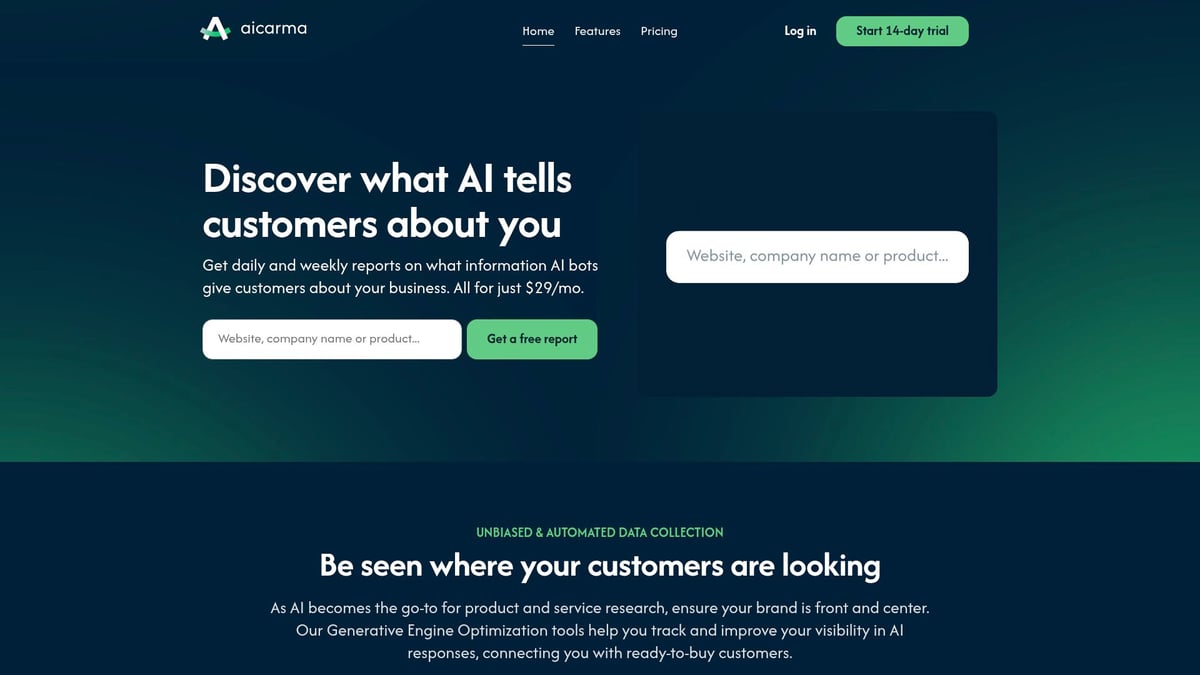
Key features:
- AI visibility tracking and competitor benchmarking
- Brand reputation management
- Messaging and tone analysis
Aicarma is ideal for brands, agencies, and content marketers focused on managing reputation and identifying market opportunities in the AI era.
Pros: Unique analytics for AI content, competitive insights
Cons: Niche use case, less traditional analytics features
Funnel
Funnel is a marketing data aggregation site analytics tool with custom pricing based on usage. A free trial is offered.
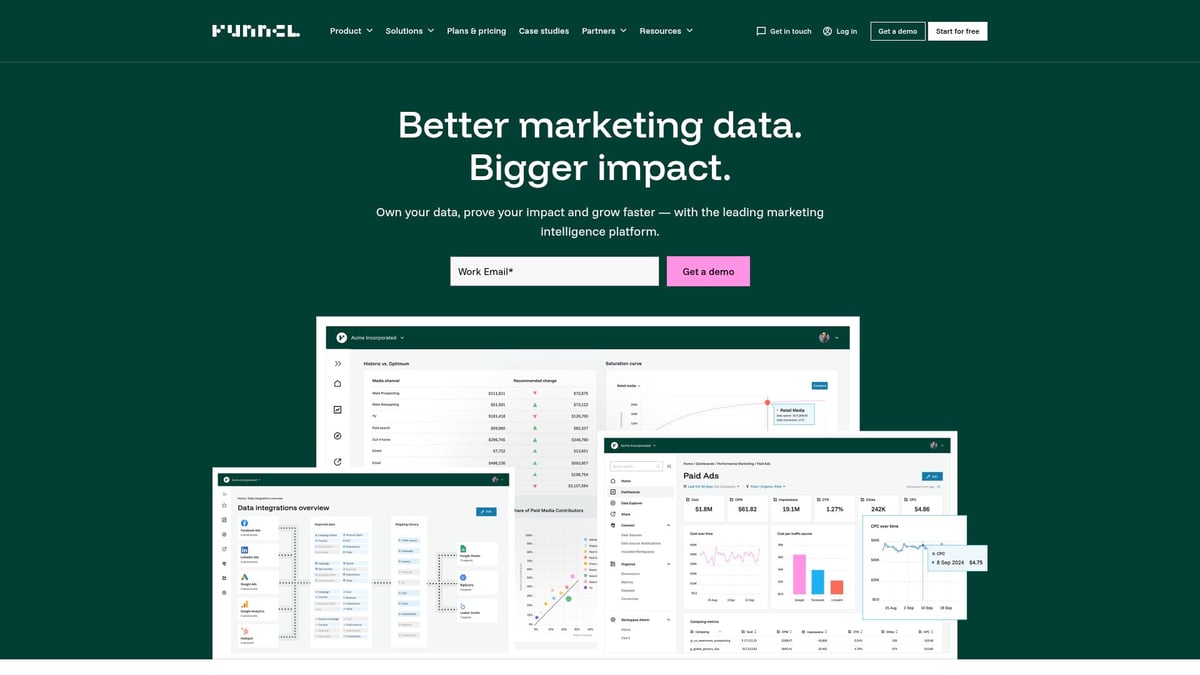
Key features:
- Automated reporting and data centralization
- Multi-channel attribution
- Integration with BI tools
Agencies and large marketing teams use Funnel to consolidate and automate reporting, supporting data-driven decisions across channels.
Pros: Scalable, flexible integrations, strong automation
Cons: Can be costly at scale, complex setup for non-technical users
Clearbit
Clearbit enriches site analytics tool data with firmographics and real-time lead scoring. Pricing is custom, with a free trial.
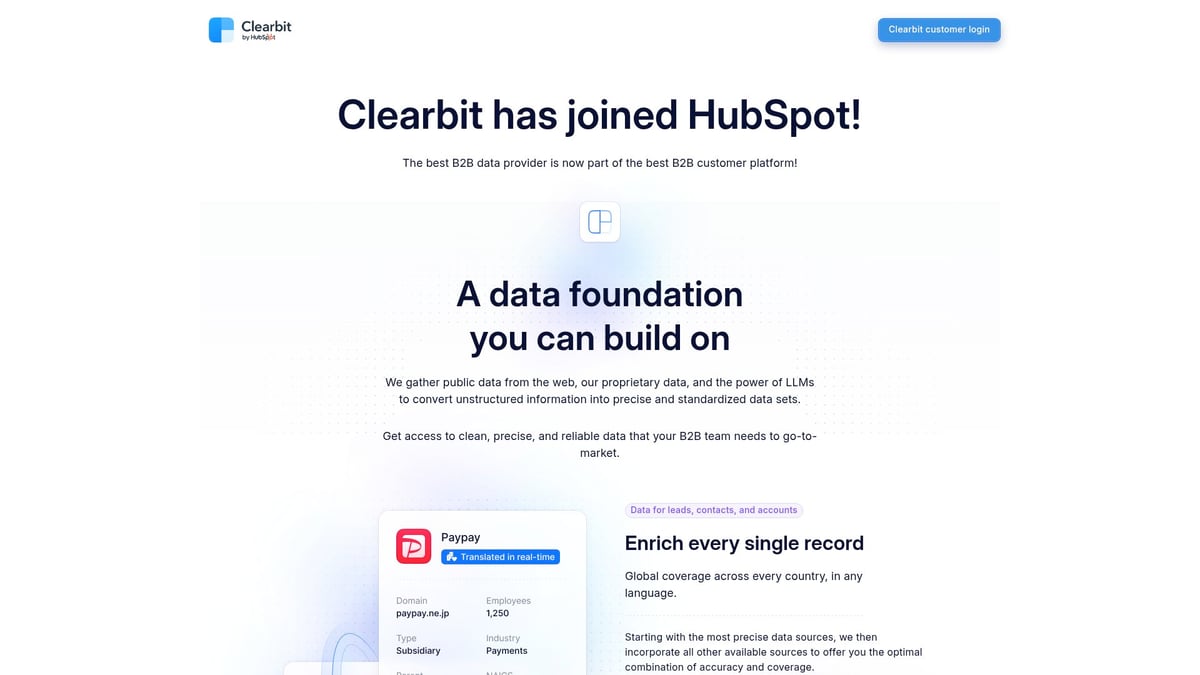
Key features:
- Visitor data enrichment and segmentation
- Real-time insights for personalization
- Lead qualification
B2B marketers and SaaS sales teams use Clearbit to improve targeting and personalize outreach based on detailed visitor profiles.
Pros: Deep data enrichment, real-time info
Cons: Expensive for small businesses, privacy compliance requires diligence
Pendo
Pendo is a product analytics and feedback site analytics tool with custom pricing and a free demo.
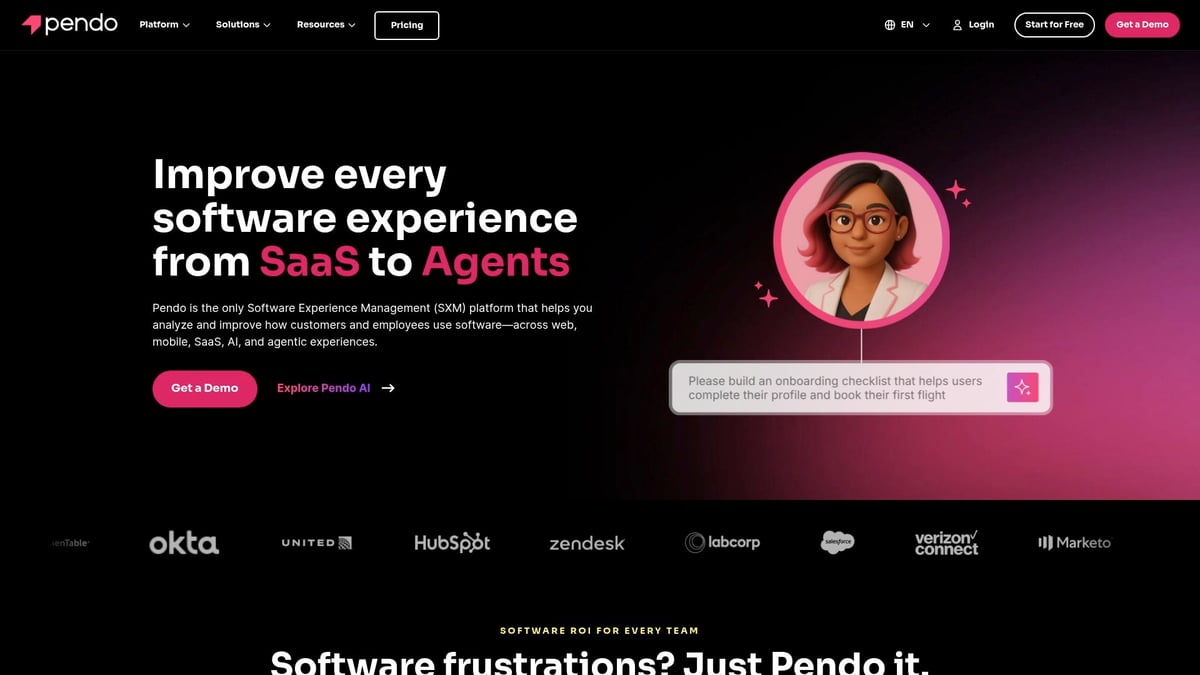
Key features:
- Product usage analytics and in-app guides
- User feedback and roadmap tracking
Product managers and customer success teams leverage Pendo to boost feature adoption and collect actionable user feedback, supporting product-led growth strategies.
Pros: Combines analytics with feedback tools, drives onboarding
Cons: Learning curve, pricing lacks transparency
Comparison Table: Key Features at a Glance
| Tool | Pricing | Privacy-Focused | Real-Time Analytics | Heatmaps/Session Replay | Integrations | Best For |
|---|---|---|---|---|---|---|
| Swetrix | $19+/mo, free self hosting | Yes | Yes | No | API, open-source | Privacy-first, developers |
| Mouseflow | Free, $39+/mo | No | Yes | Yes | Major platforms | Marketers, CRO, UX |
| Supermetrics | $29+/mo | No | No | No | 150+ data sources | Data teams, marketers |
| Hotjar | Free, $39+/mo | No | Yes | Yes | Website builders | Product, UX teams |
| Google Analytics | Free, $50k+/yr | Partial | Yes | No | Google ecosystem | All businesses |
| Fullstory | Custom | No | Yes | Yes | Product stacks | Product, SaaS |
| Aicarma | $29+/mo | Yes | Yes | No | AI, brand tools | Brands, reputation managers |
| Funnel | Custom | No | Yes | No | BI tools | Agencies, large teams |
| Clearbit | Custom | No | Yes | No | CRM, sales stacks | B2B, sales |
| Pendo | Custom | No | Yes | No | Product, feedback | Product teams, SaaS |
With these detailed reviews, you can select the site analytics tool that aligns best with your privacy requirements, technical needs, and business objectives. Each platform brings a unique set of features to the table, ensuring there’s a solution for every use case.
How to Choose the Right Site Analytics Tool for Your Needs
Selecting the best site analytics tool can feel overwhelming, especially with so many powerful options available. Your choice will directly impact how effectively you can measure, optimize, and scale your online presence. To make an informed decision, consider the following five key areas.
Assessing Your Business Goals and Website Complexity
Start by defining what you want to achieve with your site analytics tool. Are you focused on driving traffic, improving conversions, or enhancing user experience? Smaller businesses may need a straightforward solution, while enterprises require more advanced features to match their complexity.
Create a checklist of your must-have capabilities. For example:
- Real-time tracking
- Customizable dashboards
- Integration with marketing tools
Choosing a site analytics tool aligned with your goals will ensure you capture the data that matters most.
Evaluating Privacy and Compliance Requirements
Privacy should be a top priority when choosing a site analytics tool. Regulations like GDPR and CCPA have strict requirements, so you need to consider tools that support cookieless tracking and data residency controls.
For a detailed breakdown of what to look for in a compliant solution, review this Choosing a GDPR-Compliant Web Analytics Solution guide. It explains how privacy features can help you build user trust and avoid legal pitfalls.
A privacy-focused site analytics tool will protect your brand and your customers.
Integration and Scalability Considerations
Your site analytics tool should fit seamlessly into your existing digital ecosystem. Assess whether it integrates with your CMS, CRM, ad platforms, and e-commerce solutions.
Look for features such as:
- API access for automation
- Broad third-party app compatibility
- Data export options
As your business grows, your site analytics tool should scale with you, supporting increased data volume and new channels without disruption.
Budget and Total Cost of Ownership
Evaluate both the upfront and ongoing costs of your site analytics tool. Free plans may be tempting, but consider what features you might need as your requirements evolve. Paid solutions often include advanced analytics, priority support, and greater customization.
To make a fair comparison, factor in:
- Subscription fees
- Setup or migration costs
- Potential savings from open-source or self-hosted options
A well-matched site analytics tool will deliver value that justifies its cost.
Support, Community, and Ease of Use
A user-friendly site analytics tool with strong support can make all the difference. Prioritize platforms with intuitive interfaces, thorough documentation, and responsive customer service.
Benefits include:
- Faster onboarding
- Access to troubleshooting resources
- Active user communities for sharing best practices
Choosing a site analytics tool with robust support ensures you can maximize its potential and resolve issues quickly.
Future Trends in Site Analytics: What to Expect Beyond 2025
The landscape for every site analytics tool is evolving fast, with new technologies and shifting regulations shaping the future. As we look beyond 2025, several trends will redefine how businesses extract value from their analytics platforms. Understanding these trends is essential for staying competitive, compliant, and innovative.
AI and Predictive Analytics
Artificial intelligence is rapidly becoming a core component of every advanced site analytics tool. AI-driven platforms can forecast user behavior, automate recommendations, and identify opportunities for growth before they become obvious. Predictive analytics enables organizations to act on trends in real time, improving conversions and optimizing user journeys. As machine learning matures, expect analytics tools to offer even deeper insights that help businesses anticipate customer needs and fine-tune strategies with confidence.
Privacy-First and Cookieless Analytics
With privacy regulations tightening and users demanding more control, the site analytics tool of the future will prioritize data protection. The industry is shifting toward cookieless tracking and anonymous data collection, ensuring compliance and building user trust. Platforms that embrace privacy-first design, as detailed in Privacy-friendly analytics explained, are seeing increased adoption. Choosing a privacy-respecting analytics solution is not just ethical, it is critical for long-term business sustainability.
Unified Data Platforms and Cross-Channel Analytics
Modern businesses engage customers across websites, mobile apps, and offline channels. The next generation of site analytics tool will unify these data streams, providing a 360-degree view of performance and user behavior. Cross-channel analytics enable teams to track customer journeys seamlessly, identify gaps, and make informed decisions. Unified dashboards simplify reporting and reveal actionable insights that were previously hidden in data silos.
Real-Time and Actionable Insights
Speed is now a competitive advantage, and a site analytics tool must deliver insights as events unfold. Real-time dashboards and customizable alerts empower teams to react instantly to changes in user behavior or site performance. Automated notifications ensure that no critical event goes unnoticed, supporting agile responses and minimizing downtime. Instant access to actionable data helps businesses stay ahead in a dynamic digital environment.
Democratization of Analytics
The future of the site analytics tool is accessibility. No-code and low-code platforms are making powerful analytics features available to non-technical users. Intuitive interfaces, guided setup, and visual reporting lower the barrier to entry for small businesses and teams without dedicated analysts. As analytics become more democratized, organizations of all sizes can harness data-driven decision making to fuel growth and innovation.
As you explore the top site analytics tools for 2025, it’s clear that privacy, actionable insights, and ease of use are more important than ever. If you’re looking for a solution that puts your users’ trust first while giving you detailed, real-time data—without the hassle of cookie banners—Swetrix stands out from the crowd. With intuitive dashboards, GDPR compliance, and the flexibility of open-source self-hosting, you can make smarter decisions and grow your website with confidence. Curious to see how a privacy-first approach can elevate your analytics? Check out Swetrix today and experience the difference for yourself.